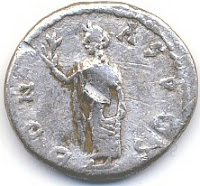
Resembles R.I.C VIII 107
minted 348-351 in Thessalonica
Emperor Constantius
Reverse is Fel Temp Reparatio- "Happy Days Are Here Again"
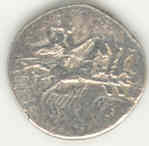
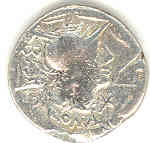
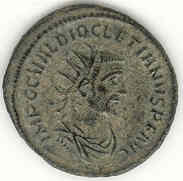
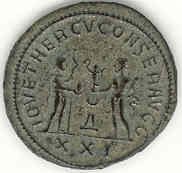
 One of the coins in our museum collection was issued in the name of the emperor Aurelian, who managed during his brief reign (270-275 CE) to restore some order and unity to the Roman Empire after the messy, chaotic years of the mid-third century. The coin on the right is in somewhat better condition than our museum coin, but is very similar to it. The reverse, or tails, side shows the personification Fortuna Redux, a woman who is seated on a wheel and holds a cornucopia and a ship's rudder. The Romans' Fortuna, "Fortune," had many aspects. She was often associated with happy or lucky outcomes, but she was also sometimes portrayed as fickle, blind, or malicious. Fortuna Redux is often described as the aspect of Fortuna who brought travelers (and maybe specifically emperors) safely home. The emperor Domitian had a temple dedicated to her after he returned triumphantly from fighting the German tribes. Even earlier, the Senate erected an altar to Fortuna Redux after Augustus came back from a trip to
One of the coins in our museum collection was issued in the name of the emperor Aurelian, who managed during his brief reign (270-275 CE) to restore some order and unity to the Roman Empire after the messy, chaotic years of the mid-third century. The coin on the right is in somewhat better condition than our museum coin, but is very similar to it. The reverse, or tails, side shows the personification Fortuna Redux, a woman who is seated on a wheel and holds a cornucopia and a ship's rudder. The Romans' Fortuna, "Fortune," had many aspects. She was often associated with happy or lucky outcomes, but she was also sometimes portrayed as fickle, blind, or malicious. Fortuna Redux is often described as the aspect of Fortuna who brought travelers (and maybe specifically emperors) safely home. The emperor Domitian had a temple dedicated to her after he returned triumphantly from fighting the German tribes. Even earlier, the Senate erected an altar to Fortuna Redux after Augustus came back from a trip to  the east.
the east.